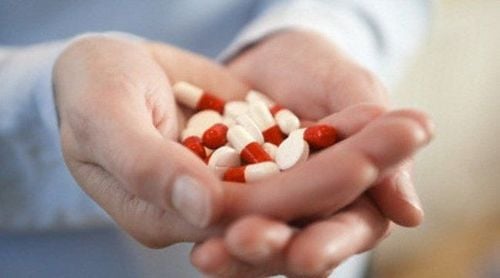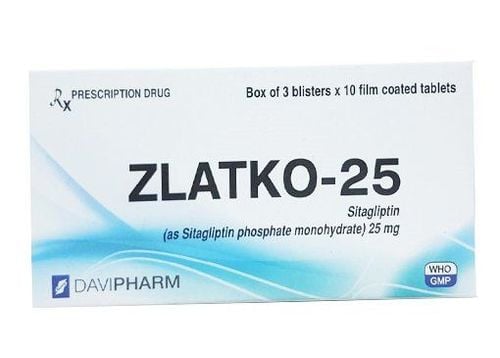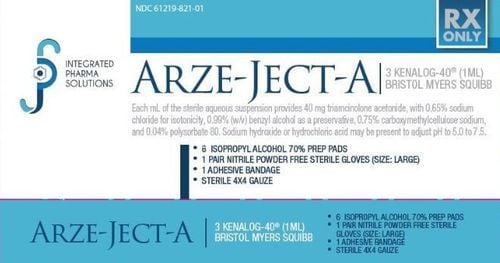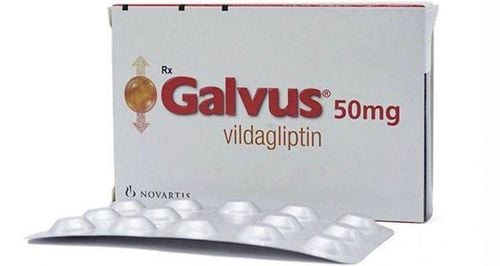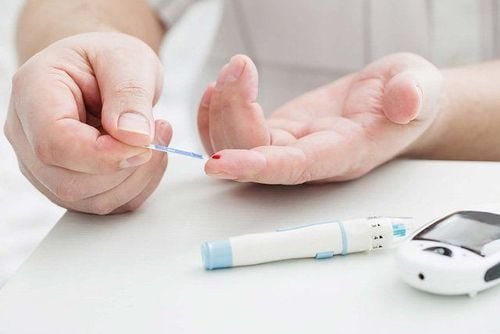This is an automatically translated article.
Two of the most common diabetic complications are hyperosmolarity and ketoacidosis. Ketoacidosis causes a wide range of metabolic disorders, severe acute decompensation that can lead to death. Clinical symptoms tend to be urgent and progress quickly, and need to be detected and treated quickly to avoid unfortunate consequences..1. What is ketoacidosis?
Ketosis is one of the serious, rapidly fatal complications that commonly occurs in patients with type 1 diabetes. An estimated 4.6-8/1000 new ketoacidosis patients each year.2. Mechanism of ketoacidosis
Insulin plays an important role in the metabolism of sugar (glucose) into the body's cells (glucose is an important source of energy for muscles and other tissues). When there is a lack of insulin, the body breaks down fats for fuel, causing an accumulation of acids in the blood called ketones, eventually leading to diabetic ketoacidosis if not detected and treated.Patients with type 1 diabetes often have ketoacidosis when:
The patient is new at the diagnosis and treatment stage: Insulin in the body is depleted, or when treatment stops insulin suddenly; Patients with stress during surgery, trauma, infection, childbirth, hyperthyroidism, cancer, endocrine diseases, taking drugs that interfere with insulin secretion... Patients with type 2 diabetes are also prone to ketoacidosis. if stressed.
3. Causes of Ketosis

Bệnh nhân tiểu đường sẽ có nguy cơ nhiễm toan ceton nếu bỏ thuốc hoặc uống thuốc không đúng liều
Diabetic patients quit treatment or take drugs at the wrong dose; Infection; Acute diseases: Pulmonary infarction; heart attack ; cerebrovascular accident, acute pancreatitis...; Trauma, after surgery; Using drugs that cause hyperglycemia: Corticosteroids, beta-blockers, diuretics...
4. Symptoms of Ketone Acidosis
When ketoacidosis, the patient will have the following symptoms:Dehydration: body weakness, fatigue, loss of appetite, thirst, dry skin and mucous membranes, cramps, rapid pulse, low blood pressure; Hyperglycemia: Fatigue, frequent urination, blurred vision, thirst; Consciousness disturbances: lethargy, dizziness, coma; Symptoms of metabolic acidosis: nausea, vomiting, vomiting, abdominal pain, rapid deep inspiration (Kussmaul pattern), breath smell of rotten apples. Regarding biochemical tests, ketoacidosis is characterized by:
High blood glucose index: >250 mg/dL (13.9 mmol/L); Blood pH <7.3; Alkaline reserve decreased <15 mEq/l; Positive blood ketones (Beta Hydroxybutyric Acid >5 mEq/L); Strongly positive urinary ketones.
5. Measures to treat ketoacidosis
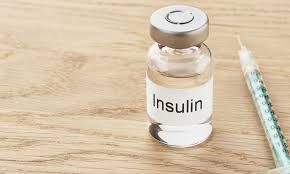
Khi bị nhiễm toan ceton, người bệnh thường có xu hướng thiếu Insulin tuyệt đối hoặc tương đối trầm trọng
5.1. Rehydration When ketoacidosis is more likely to occur, acute decompensation occurs. The average amount of fluid loss is about 5-11 liters, so it is necessary to replenish extracellular fluid and reperfuse the kidneys.
For patients with hypovolemia but no signs of heart failure:
Infusion of 0.9% NaCl (isotonic saline) at a rate of 15-20ml/kg/hour or 1 liter/hour.
Depending on the state of dehydration, electrolyte disturbances and urine output to choose a replacement fluid for infusion:
If the corrected sodium is normal, administer 0.45% NaCl at a rate of 4-14ml/kg/hour or 250-500ml/hour; If the corrected sodium is decreased, administer 0.9% Nacl at a rate of 4-14ml/kg/hour or 250-500ml/hour; If blood glucose <11.1 mmol/l, add 5% Glucose infusion until dehydration and ketoacidosis improve. 5.2. Insulin infusion When having ketoacidosis, patients often tend to have absolute or relatively severe insulin deficiency, accompanied by an increase in insulin resistance hormones in the body.
(Note not to administer insulin when the K+ concentration in the blood is <3,3 mmol/l)
Inject insulin Astroid 0.1 UI/kg intravenously, then IV insulin 0.1 UI/kg/h; If blood glucose <11.1mmol/l, need to reduce insulin dose to 0.05 IU/kg/h, then give 5% glucose infusion and maintain blood glucose in the range of 8.3-13.8 until the ketoacidosis is gone. and dehydration. When the ketoacidosis has stabilized (blood glucose <11.1mmol/l, HCO3- ≥18mmol/l, H 7.3, anion gap <12), the patient can eat, then switch to lower insulin injection skin to control blood sugar. 5.3. Potassium compensation If blood K+ concentration <3.3 mmol/l: Stop insulin infusion, replace Potassium 20-30 mEq/h until blood K+ concentration > 3.3 mmol/l; If blood K+ concentration is from 3.3-5.3 mmol/l: compensate for K+ concentration of 20-30 mEq/l and maintain K+ at 4-5 mmol/l; If blood K+ concentration >5.3 mmol/l: do not compensate for potassium, check blood K+ every 2 hours. The patient's vital signs should be monitored every 30 minutes for the first hour, every 1 hour for the next 4 hours, and every 2-4 hours until the ketoacidosis is completely resolved. In addition, electrolytes, renal function, blood gases, blood and urine ketone levels, and hyperosmolarity should also be monitored every 4 hours until the patient is completely cured. stable.
Vinmec International General Hospital with a system of modern facilities, medical equipment and a team of experts and doctors with many years of experience in medical examination and treatment, patients can rest assured to visit. examination and treatment at the Hospital.
Please dial HOTLINE for more information or register for an appointment HERE. Download MyVinmec app to make appointments faster and to manage your bookings easily.





